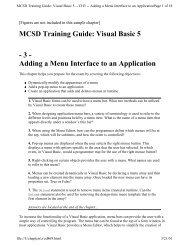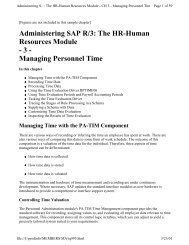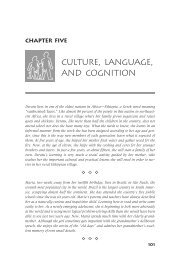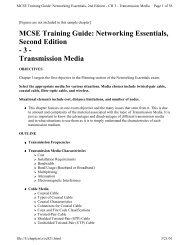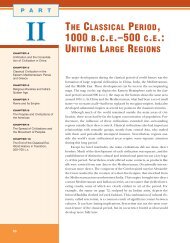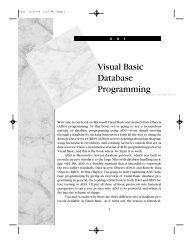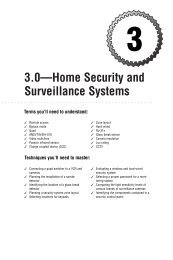Special Edition Using SAP R/3, Third Edition
Special Edition Using SAP R/3, Third Edition
Special Edition Using SAP R/3, Third Edition
Create successful ePaper yourself
Turn your PDF publications into a flip-book with our unique Google optimized e-Paper software.
<strong>Special</strong> <strong>Edition</strong> <strong>Using</strong> <strong>SAP</strong> R/3, <strong>Third</strong> <strong>Edition</strong> - CH 3 - Exploring R/3 Architecture Page 19 of 26<br />
memory manager can coordinate external paging through the operating system and internal paging<br />
through the dispatcher.<br />
Extended Memory Management and R/3 User Session Contexts<br />
R/3 Release 3.0 introduced an extended memory capability that permits a more intensive use of<br />
virtual memory. Reservations for roll and paging areas are no longer necessary and have been<br />
replaced by the R/3 user session context system.<br />
When a work process is conducting activities as part of a step in a user dialog, it needs ready access<br />
to a set of data elements. These elements are the user session context.<br />
If another work process is assigned to the next step in the dialog, the information now in some or all<br />
of the data elements of the first user session context must be made available to the second work<br />
process. The second user session context may also require additional information.<br />
Before Release 3.0, user session context information was transferred by the roll-in, roll-out method of<br />
copying information. This took a great deal of time and many system resources.<br />
In Release 3.0 and later releases, the data needed by subsequent user session contexts is accessed not<br />
by copying, but by mapping. The information transferred to the subsequent dialog step is not the<br />
actual data, but a set of pointers that indicate where that data can be found. Thus, a very complex data<br />
structure can be addressed or mapped for use by a work process by the transfer of a simple mapping<br />
pointer message.<br />
NOTE: Data swapping is handled by the operating system.<br />
<strong>Using</strong> mapping rather than copying in this context is expected to provide a much faster response time<br />
and, in certain installations, the possibility of handling larger loads without adding application<br />
servers.<br />
Developments in virtual memory made possible by 64-bit architecture are expected to extend the<br />
benefits of the mapping concept.<br />
Open Interfaces to <strong>Third</strong>-Party Products<br />
Three types of interfaces are used:<br />
Collectors of data about the operating system performance, the database, and the network<br />
Service interfaces to supervise backup, recovery, spooling, and security<br />
Management interfaces for handling messages and events related to application monitoring and<br />
control<br />
These systems are discussed in Part VIII, "Maintaining and Enhancing the Implementation."<br />
file://J:\prodinfo\MEMBERS\MA\ir057.html 3/23/01




